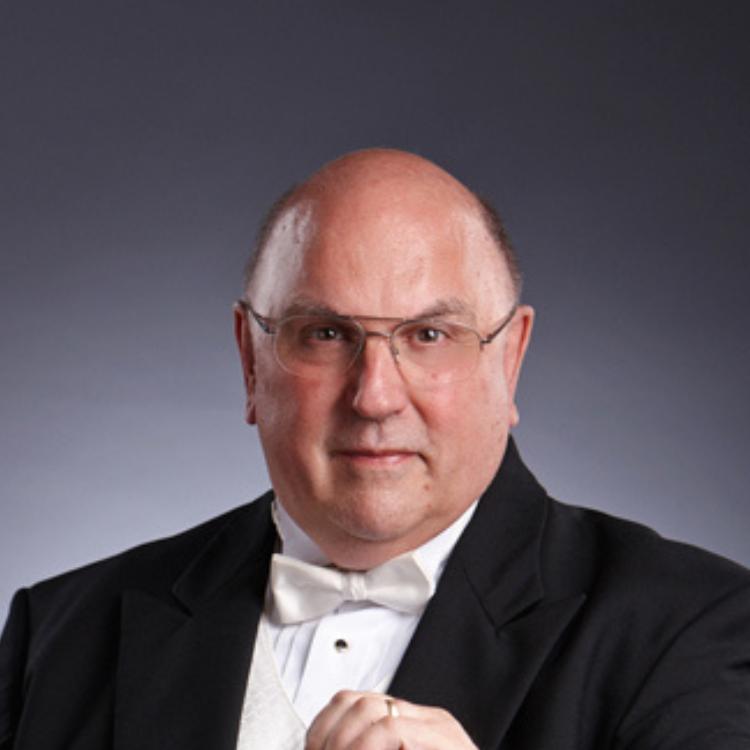
No. 6 - Vatican II and Worship
The decade of the 1960s was one of turbulence and ferment. The self-inflicted myopia of the 1950s infected the church as well as society at large. The 1950s had been a decade of relative peace and prosperity, despite concerns about the atomic bomb and the growing unrest of the civil rights movement simmering just below the surface. During the 60s, these and other issues burst forward, forcing the church to abandon its torpor and face, in one way or another, the challenges of the time. One of the most inflammatory best-sellers of the post-war era was Pierre Berton’s The Comfortable Pew (1965). In it Berton, a Canadian newspaper columnist, criticized organized religion for being elitist, failing to relate to real-world problems, and for being handicapped by multiple denominational groups, each claiming a monopoly on truth. It was clear, he wrote, that the world of the 1950s had changed yet worshipping in the Anglican Church of Canada gave no evidence of that. “We were all,” he wrote, “about to enter a New Age; yet there was nothing in that service to indicate the world was different, that the language was different, that men were different. Sermon and all, it was a carbon copy of those Sunday rituals . . . in the 1920s.” [1] As the decade progressed, searing issues would tear at the fabric of American society: the assassinations of President John F. Kennedy, Martin Luther King, and Robert Kennedy; the rapidly escalating war in Vietnam; and the civil rights movement.
Since the beginning of the 20th century, Roman Catholics had tried valiantly to realize the reforms envisioned by Pope Pius X in his 1903 Motu Proprio. Nevertheless, what progress there was had been impeded by a severe lack of trained leadership. Unlike Europe, the melting pot which was America presented unique challenges. The sheer number of ethnic groups claiming a Catholic identity – while not speaking the same language and not able to read from the same Bible or prayer book – made insistence on a common liturgy daunting. In addition, each of those groups came with their own unique liturgical practices, ingrained over centuries, which would be difficult to change. The Reverend Pius Parsch (1884-1954), a Moravian Catholic priest seeking reform, was a highly respected clergyman. He had served as a chaplain during the First World War and found the Latin Mass ineffective in ministering to soldiers on the front lines who were unfamiliar with it.[2] A principal goal of the Motu Prorio had been “participatio actuosa” or “full congregational participation” in all aspects of the liturgy including its music. Inhibiting achieving this, however, was the encyclical’s insistence on the exclusive use of ecclesiastical Latin.In January of 1959 Pope John XXIII, Pius XII’s successor, announced he would convene a council to be called “Vatican II”. The Council formally opened on October 11, 1962. The 2600 bishop-delegates present far exceeded the number of delegates at any previous council. Vatican II was unique among the many councils of the Catholic church since antiquity. While historically councils had been convened to address issues of theology, heresy and church/state relations, Vatican II was the first to be focused solely on renewal and reform. Four major documents (or constitutions) dealing with reform in all areas of Catholic life were produced during the four years Vatican II was in session.
Of these, the document most germane to the study of music in the church was the first, Sacrosanctum Concilium (trans. “the sacred liturgy”). Where the Motu Proprio had required the mass liturgy to be celebrated in Latin and music for it be limited to Gregorian chant and polyphonic choral music, Vatican II advocated a more relaxed approach: “But other kinds of sacred music . . . are by no means excluded from liturgical celebrations, so long as they accord with the spirit of liturgical action…” Regarding musical instruments, the 1903 encyclical had decreed that “the organ be the only generally authorized instrumental music in worship.”[3] Of greatest consequence: Vatican II left it to the discretion of a “competent territorial ecclesiastical authority” to “decide whether, and to what extent, the vernacular language is to be used.”[4] Again, Vatican II relaxed the restrictive nature of the decree, leaving what instruments and how they might be used to local parish authorities. The overriding issue of concern to Vatican II was the same as it always had been – achieving full congregational participation. The Roman Church had come to the realization that this could only be achieved by stepping back from the restrictive covenants of the Motu Proprio.Because of the gravity of the situation, Pope Paul VI put Sacrosanctum Concilium into effect as church law on December 4, 1963 – a full three years before the Vatican council would complete its deliberations.
So much changed so fast. On one Sunday in 1964, Catholics worshipped as they had for 400 years: in silence, on their knees, looking up to the altar at their priest as he prayed softly in Latin, his back to the congregation. The next week, this same priest faced the people, addressed them clearly in English, and encouraged them to sing together. Accustomed to silence, American Catholics joined in song reluctantly, if at all. That too, changed when young musicians brought their guitars and enthusiasm into the liturgy. Suddenly, the Church was rocking as Catholics discovered the unifying power of congregational singing.[5] A first American celebration of the mass utilizing Gregorian chant but with English texts was debuted at the National Liturgical Conference of the Roman Catholic Church in St. Louis on August 24, 1964. But the reforms being sought by American clergy were more far reaching than simply the matter of language. In the next two years, divisions would become apparent on the nature and amount of change needed. The Church Music Association of America represented a conservative contingent within the denomination advocating preservation, wherever possible, of the Latin liturgy of the Mass, continuing the use of Gregorian chant and the ongoing use of choirs dedicated to the performance of polyphonic music. Supporting more radical reform was Univera Laus, an organization established in Switzerland for which Joseph Gelineau was a chief spokesman. Its membership was largely made up of liturgists and musicologists, and its stated function was to study “the ritual function of music in liturgy, and the relationship between form, function, and signification.”[6] Ultimately, Universa Laus would prevail.Sister Miriam Therese Winter (bn. 1938), now famous for her songs including “Joy is Like the Rain”, gained prominence through her work with the Catholic nursing order, the Medical Mission Sisters. Her folk-like, guitar-accompanied spiritual songs, recorded by the sisters in best-selling albums beginning in 1966, placed her squarely in the middle of the controversy roiling the Catholic church. She later explained her perspective on the issues at stake. The polarization she saw was between the “song of the people” and the “artist’s song” – between folk singers with guitars and professional musicians.
The Council’s call for full, active participation by congregations created the context for the present problem… The pastoral goal was closely linked to the need for comprehension, which resulted in a swift transition to a vernacular liturgy throughout the United States. Along with the loss of Latin there was the loss of all that music in which the Latin language played so integral a part. Gregorian Chant and classical polyphony ceased to be the norm or the goal of the average Catholic parish, a traumatic adjustment for professional musicians and all those sensitive to and appreciative of the art treasures of the past.[7] Meanwhile in 1965, a young seminarian, Raymond Robert Repp (1942 – 2020) was tapped to lead the music for a celebration of the Mass with a chorus of 400 college-age youth at the Catholic Church Extension Society’s Lay Volunteer Program in Chicago. “The young composer greeted the eager congregation, his Gibson guitar slung over his left shoulder. ‘Good evening. Tonight, for Mass we’re going to sing some new songs…’ The youthful congregation was electrified. This new music was as fresh as anything sung by Peter, Paul, and Mary, and they chimed in readily when Repp invited them to sing along.”[8] The music sung that night would be published as “A Mass for Young Americans” would eventually sell millions of copies and be translated into 28 languages.The folk masses of Ray Repp and others were but the earliest musical inheritance from the liturgical reforms of the Second Vatican Council. The folk character of much of music still permeating Catholic worship in the 21st century stems from the pioneering work of a long list of other composer/seminarians. Perhaps most influential of all was a group of composer/singers who, like Repp, began their work in St. Louis – “The St. Louis Jesuits.”
The development of the folk mass and the incursion of acoustic guitars into the worship of both Catholics and protestants needs to be seen in a cultural context. The folk mass itself represented a challenge to liturgical traditions once thought unchangeable. In that light, the use of guitars was a challenge felt across the Christian worship landscape which had traditionally been viewed as the exclusive domain of pipe organs. At the very time the first guitar masses were being introduced to Roman Catholics, another bellwether was taking place in Southern California at the Calvary Chapel of Costa Mesa. It’s music would be entirely guitar-based, and its simple songs, a radical alternative to traditional Protestant hymnody. Out of it was being birthed what we now refer to as “contemporary Christian music”.
Best wishes and Peace,
Stan McDaniel [1] Pierre Berton, The Comfortable Pew. (Philadelphia: J. B. Lippincott & Co., 1965), p10. [2] Pius Parsch, “Rev. Pius Parsch, C.R.S.A.”. Autobiographical sketch written for The Book of Catholic Authors. Reprint on CatholicAuthors.com [3] Pius X, “Tra le Sollecitudini” (1903). [4] “Constitution on the Sacred Liturgy, Sacrosanctum Concilium, Solemnly Promulgated by His Holiness Pope John Paul VI on December 4, 1963“ [5] Ken Canedo, Keep the Fire Burning: The Folk Mass Revolution. (Portland, OR: Pastoral Press, 2009) p33 [6] Paul Inwood, “History of Universa Laus” [https://universalaus.org/history/] [7] Miriam T. Winter, Why Sing? Toward a Theology of Catholic Church Music. (Washington, D.C.: The Pastoral Press, 1984) p3 [8] Canedo, Keep the Fire Burning, pp41-42 99

AUTHOR
Stan McDaniel
©2023 Stanley R. McDaniel, All Rights Reserved.
Copying or re-publication is expressly prohibited without direct permission of the author.


Fascinating! I played guitar and sang in a Christian folk group of 30 or so while in high school. We sang for local churches, toured several times and made a number of albums. It was quite sometime before I even realized it was born out of the local Catholic Church (I was United Methodist). It was a wonderful experience and led me to form my own folk group while in college. That style of music really spoke to young people and gave us a way to express our faith.